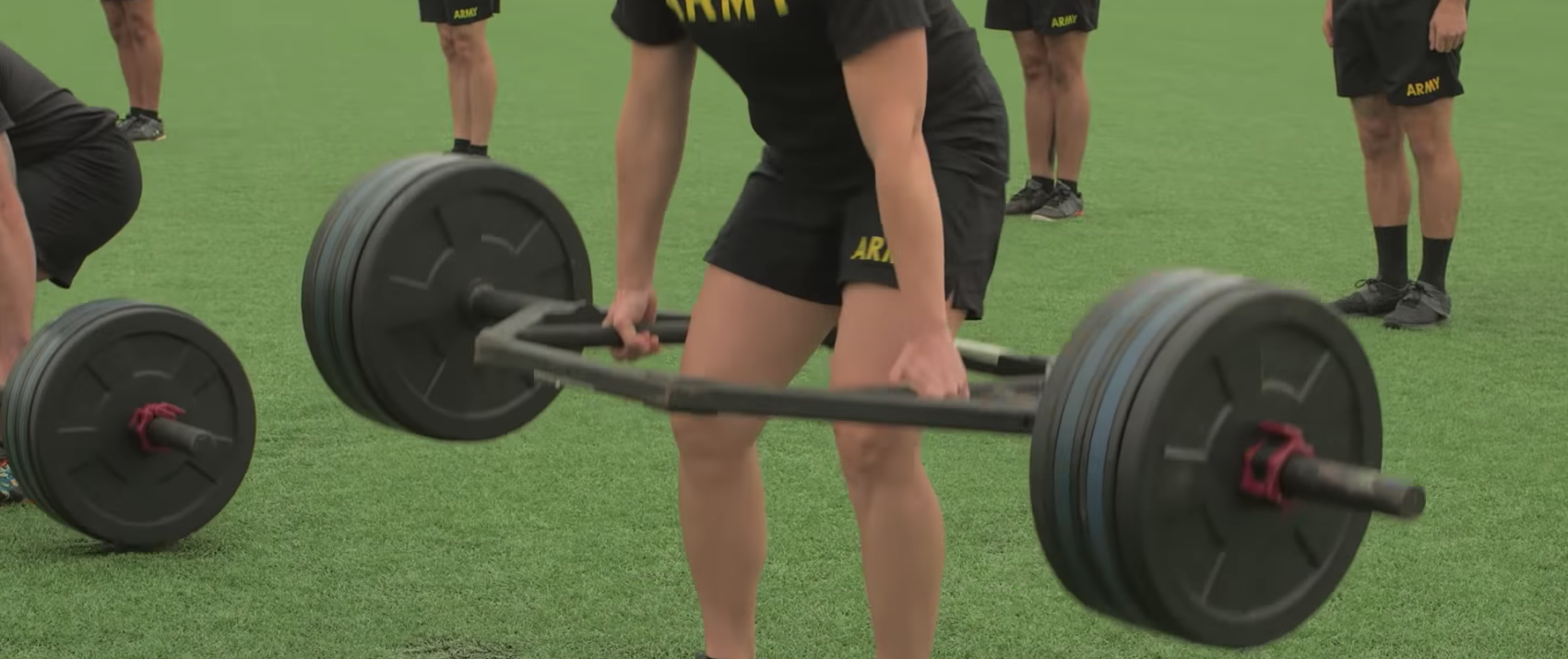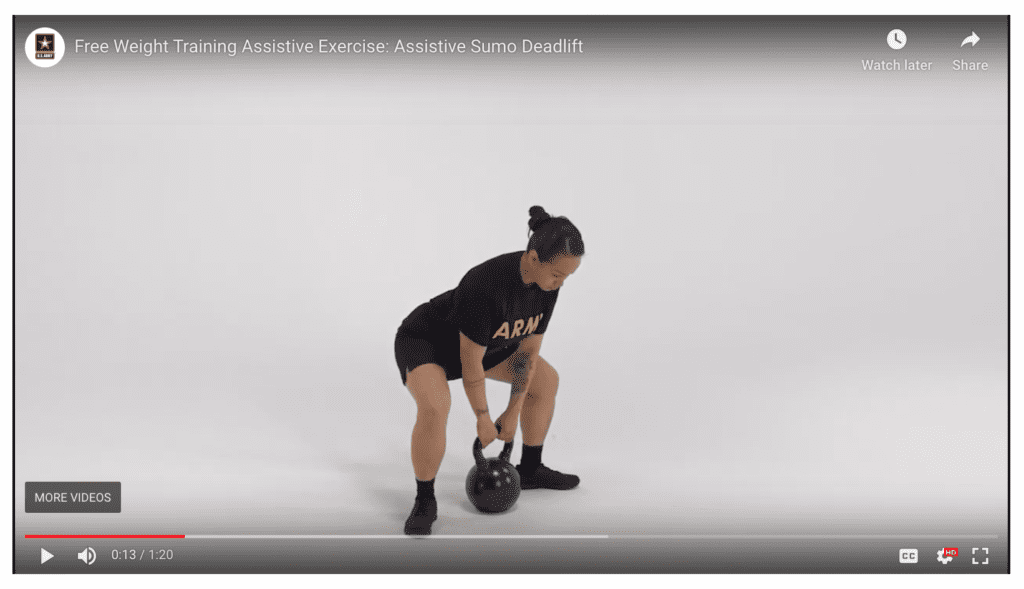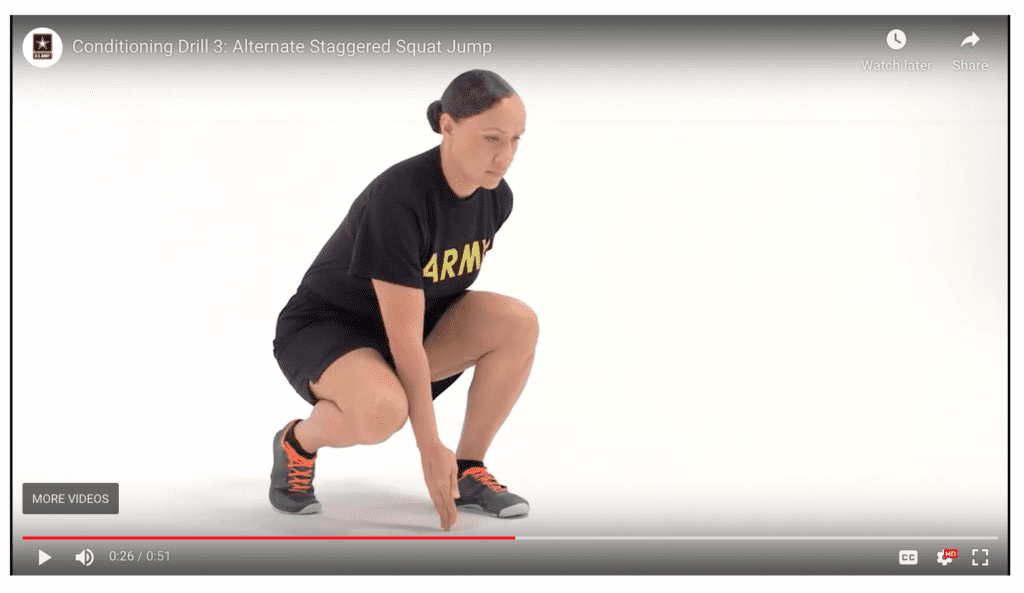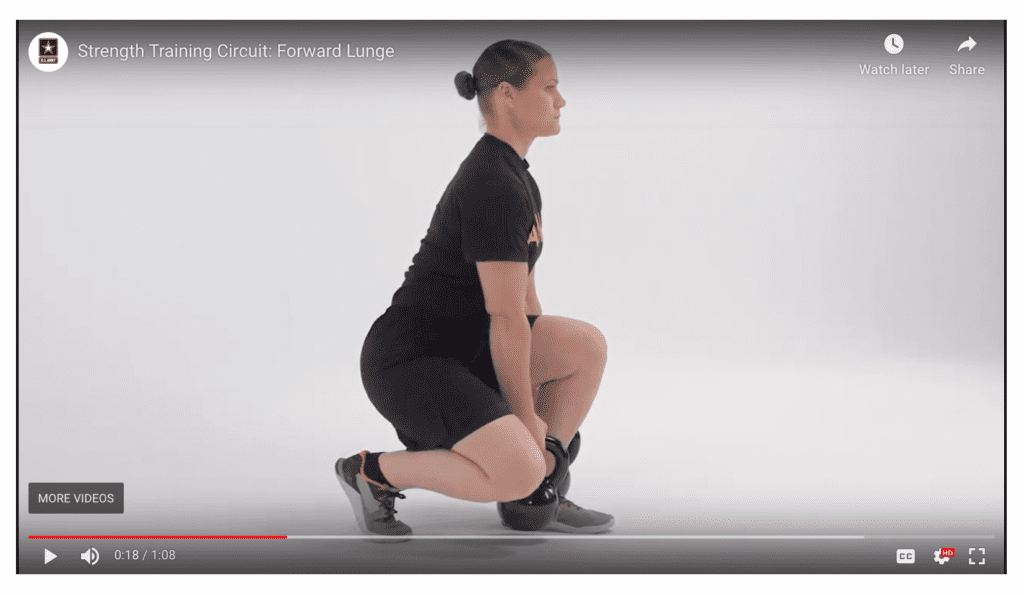12-Week ACFT Train-Up Plan on TrainHeroic!
Hey, before you go any further, if you’re someone that needs help, I got you. My ACFT Train-Up Plan is now only $75. If you’re looking for an ACFT specific train-up program to follow, to get coaching, feedback, questions answered, exercise modifications as needed and to train virally with others I got you. Plus I have been training soldiers for over a decade and have way more than a weekend cert.
I’ve been promising to finish up my blog series on the ACFT and telling people that it’s on the way for what feels like months. But seeing as other pressing things kept popping up I put it back on the back burner and told myself I’d get to it next week. Next thing you know it’s 2020. Whoops. Here goes nothing. I’m sure there is a typo or two. I’ll find it tomorrow, been staring at a computer for too long.
If you’re in the ARMY the main priority of your training regiment has probably shifted over the past 6-12 months away…or at least I hope it has. Maybe you’ve gotten into the gym with a little more regularity and skipped that long slow run to bang some weights around and take a more functional approach to your training. Or maybe you haven’t changed a thing. Just in case you haven’t now is a good a time as any to start. October 2020 will be here before you know it. You can’t cram for this test like it’s the SATs. Strength takes time to develop and the more practice you can have with these events, especially the Trap-Bar Deadlift, the better you will perform.
The 3-Rep Max Deadlift (MDL) is the focus of this blog. It was chosen by the Army because they felt “it best represented the movements required to safely and effectively lift heavy loads from the ground, jump, bound and tolerate landing. It requires well-conditioned back and leg muscles and helps Soldiers to avoid upper and lower back injuries caused by moving long distances under heavy load.” Like I have said in previously blogs, I truly hope they let you all properly warm-up (I’ve heard conflicting descriptions of how its been run) and I really hope they teach you properly. I know I can be overly critical as a Strength & Conditioning coach, but here are 3 exercises that they have to train for this event on the ACFT website… KB Sumo Deadlift (big fan of this one), Alternate Staggered Squat Jump (just weird) & Forward Lunge (watching how they have this soldier lunge makes my knees hurt).
*If you’re someone who want’s to follow a sound strength & conditioning program geared toward you, the tactical athlete and/or war fighter, delivered daily to your phone for $27/mo, I got you covered. Learn more below!*
Tips, Tricks & Back Saving Cues:
It’s not all in the heels: You’ve probably been given a cue of some nature before that revolves around your heels and leaning back. It’s more important to think about pushing into the ground and keeping weight through your whole foot, especially into your toes/balls of your feet. You want to think of your foot like a tripod and keeping 3 points of firm contact with the ground. Your heel, the ball of your foot and the outer edge of your foot at the base of the pinkie toe. So get your feet anchored to the ground and push through them to generate the force need. Don’t be passive, be active: Go search out Deadlift Fail videos and you can find hours of cringe-worthy entertainment. If you are going to be lifting heavy weights, which you are all capable of, you need to understand that it is not a passive process. You are an active participant in the lifting process and need to maintain full-body tension. If you are loose or passive in this process you’ll most likely round your shoulders or back and your hips will shoot up before anything else. Sadly, the majority of people that are new to deadlifting will just bend over, grab the bar and attempt to lift it. The worst part is they probably will be able to lift it off the ground. That’s what makes the DL dangerous. Take your set-up seriously: It can be done with really shitty technique. We’ve all seen it. But something as simple as taking your set-up serious will help immensely. Grip the bar with a purpose, pull your chest up and push your hips down and pull the slack out of the bar. Think about making your arms as long as possible with elbows extended. Squeeze your upper back/posterior shoulders and pull your chest up toward the ceiling, like you have a giant fish hook under your sternum. Push your hips down until you feel maximum tension building up in them. And then say bye bye to all the slack. Now you’re ready to rock! If you still find that you can’t keep tension a trick I like to try is to stand tall, isometrically flex every muscle that you can, back, legs, arms, chest and sit yourself down into your starting position. You may lose some tension as you get down there but I’ve found people have an easier time reestablishing tension if they previously started with some. Just breathe..actually hold it: How you breathe is just as vital, if not the most vital, of any of the other pieces I’ve mentioned here. In order to adequately stabilize the spine, the abdominal and thoracic cavities must be pressurized. Hence how you breathe and hold your breath effect that. So try to draw in as much air as possible to fill your abdomen ensuring the lungs are filled fully. If you just pull the air into your chest you are missing out. Once the air is sealed in, tighten your abs and back musculature. Yes you are holding your breath and yes it is safe. But don’t think of tightening the abs means to suck them in, though it looks cool on the beach it does nothing to help you lift weight off the floor. This level of pressurization should be maintained throughout as much of the movement as possible. Letting a little bit of air out past midway or at the top is ok, but before you go for rep two repeat the previous steps to reestablish that same level of pressurization. Don’t over do it: Pushing the deadlift hard is the most taxing thing you can do in training outside of heavy long rucks. If you push it very hard either by maxing out or going close to failure you’ll negatively impact recovery, which can affect the next couple of training sessions and for some people can wreck you for a week or more. People have asked me if they can get better at deadlifting with out actually deadlifting. Now if you grew up on a farm bailing hay in your formative years, you probably will do just fine with the ACFT Deadlift, but if you didn’t, you better be deadlifting once every 7-10 days. You can do things besides deadlifting to help your deadlift like specific accessory movements, but don’t neglect deadlifting…and don’t deadlift every day. Your back will thank you! Get your mind right: Now deadlifting does require a certain mindset that doesn’t come naturally ingrained in all of us. It is a highly psychological lift and you need to practice handling heavy weights (relative to you). I am not advocating finding a max every day you have deadlifts. But it is important that you set goals and work throughout the year to achieve them. One kilo at a time: The best thing you can do is set yourself up for success. Don’t be in a race, this is a marathon not a sprint, strength will come, you just have to be patient. In weightlifting we use kilos so I try to live by the 1 kilo rule. The whole point of it is, why not make smaller, more frequent improvements, think 5lbs, rather than hoping you make big ones, think 25lbs, infrequently? The former is a more constant measure of progress that keeps you motivated to continue. Failing on a 25lb PR attempt sucks, especially when you could’ve taken a 5lb.“And if all else fails, just clench your taint abs really hard.”
If you want to take all the guesswork out of your daily training regiment, or if you’re looking for an ACFT Train-Up plan to follow, the easiest and smartest thing you can do is join one of our Online Training Teams for less than a $1 a day or buy access to our 12-Week ACFT Train-Up Plan. Learn more at the link below.
Need Help? Just ask…Seriously.
I hope this can help some of you out there. If you have questions let me know geoff@gpshumanperformance.com
Geoffrey Steinbacher is a former Strength & Conditioning Coach within the THOR3 (Tactical Human Optimization Rapid Rehabilitation & Reconditioning) Program at Ft. Bragg. He is a Certified Strength and Conditioning Specialist (CSCS) from the National Strength and Conditioning Association. As well as a Certified Athletic Trainer (ATC) from the National Athletic Trainers Association. On top of being an Advanced Sports Performance Coach (USAW-L2) and Head Club Coach with USA-Weightlifting. He also is a Catalyst Athletics Certified Weightlifting Coach (CACWC-L1). Furthermore, Geoff has a BS in Athletic Training from SUNY Cortland and a MS in Exercise Science from Syracuse University.
ACFT Handbook Description & Standards:
3 Repetition Maximum Deadlift (MDL) is a muscular strength test that represents movements required to safely and effectively lift heavy loads from the ground, jump, bound and tolerate landing. The MDL is a strong predictor of a Soldier’s ability to lift and carry a casualty on a litter, and to lift and move personnel and equipment. This test event requires well-conditioned back and leg muscles that assist Soldiers in load carriage and in avoiding injuries to the upper and lower back caused by moving long distances under load and lifting heavy objects.
The MDL consists of three phases: preparatory, upward movement, and downward movement.
- Preparatory Phase: the Soldier will step inside the hexagon/trap bar, feet generally shoulder width apart, and locate the midpoint of the hexagon/trap bar handles. On the command of “GETSET,” the Soldier will bend at the knees and hips, reach down and grasp the center of the handles. Arms should be fully extended, back flat, head in line with the spinal column or slightly extended, head and eyes to the front or slightly upward, and heels in contact with the ground. All repetitions will begin from this position.
- Upward Movement Phase: on the command of “GO,” the Soldier will stand up and lift the bar by extending the hips and knees. Hips should never rise before or above the shoulders. The back should remain straight – not flexed or extended. The Soldier will continue to extend the hips and knees until reaching an upright stance. There is a slight pause at the top of this movement.
- Downward Movement Phase: by flexing the hips and the knees slowly, the Soldier lowers the bar to the ground under control while maintaining a flat-back position. Do not drop or let go of the bar. The hexagon/trap bar weight plates must touch the ground before beginning the next repetition. Weight plates may not bounce on the ground.
Execute three continuous repetitions with the same weight.
- If the Soldier fails to complete three continuous repetitions under control, he or she is permitted one retest at a lower weight after a rest of up to two minutes.
- If the Soldier successfully completes three continuous repetitions on the first attempt, he or she may elect an additional attempt at a higher weight after a rest of up to two minutes.
- The maximum number of attempts on the MDL is two.
- The heaviest weight successfully lifted three times is the raw score recorded.
Graders will stop the attempt if they determine a Soldier will injure themselves by continuing. Common causes of injury include:
- Hips moving above the shoulders.
- Excessive rounding of the shoulders.
- Knees collapsing inwards.
- Dropping the weights.
**If the grader stops a Soldier to prevent injury, this is not considered a record attempt. A test attempt is not stopped for minor errors in form that are not deemed a threat of injury.
Graders will terminate a record attempt (which counts as one of two record attempts) if the Soldier:
- Drops or bounces the weights off the ground.
- Rests in the down position. Resting means no continuous effort is being made to lift the weight.




